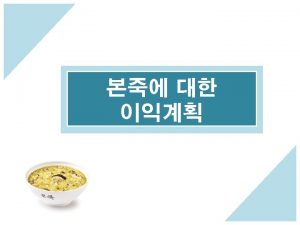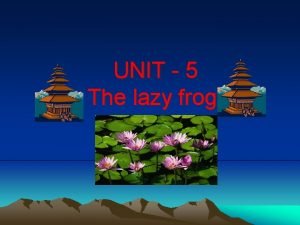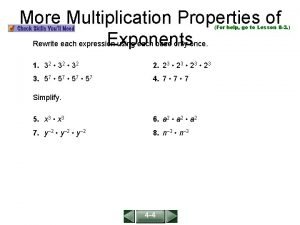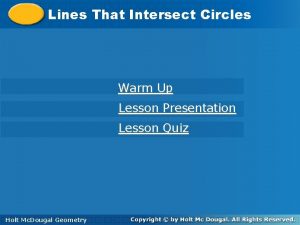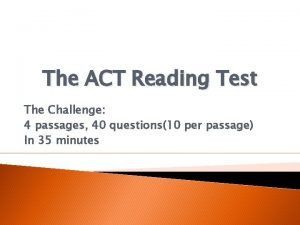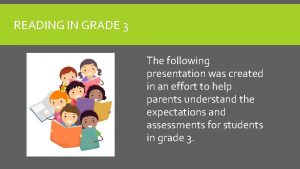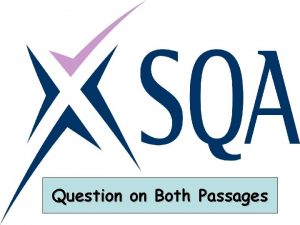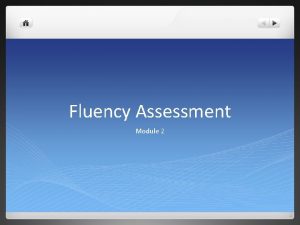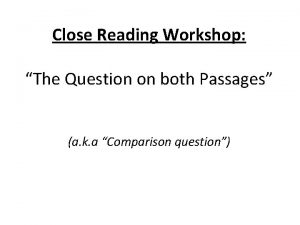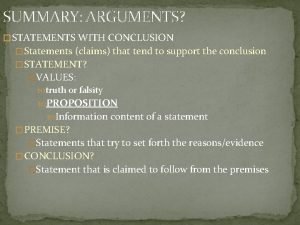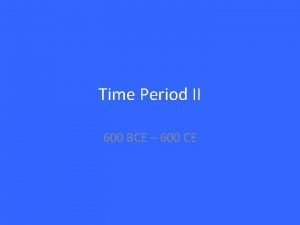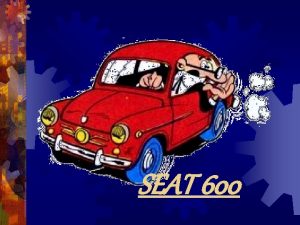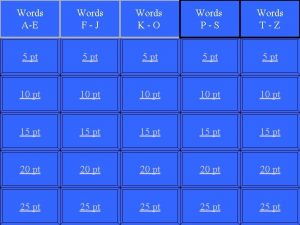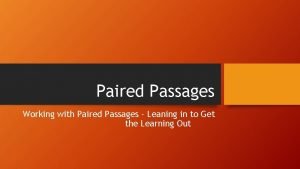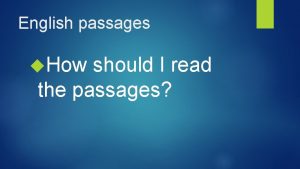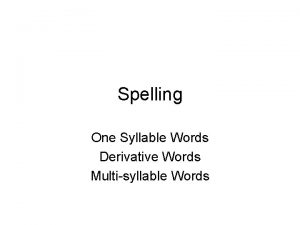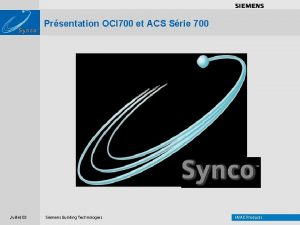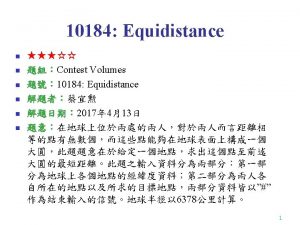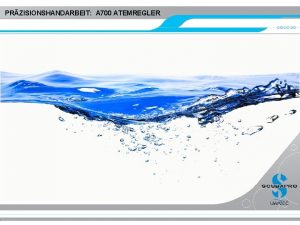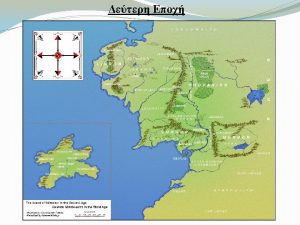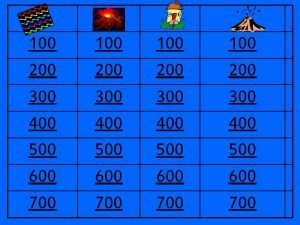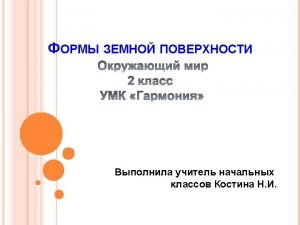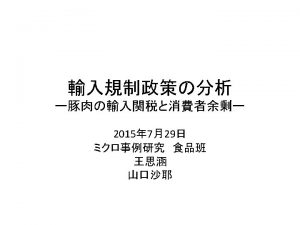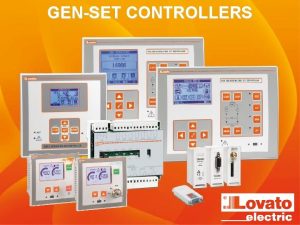Passages 3 passages 600 700 words each one



























- Slides: 27



Passages: 3 passages (600 - 700 words) each one followed by 12 to 14 questions. Timing: 60 minutes (about 15 minutes for each passage).

Topics: Science and Technology; North American History, Government, Geography and Culture; Art; Social Science; Biography and autobiography.

Topics Skills in this section include the ability to: • Scan for details; • Use context clues to understand the meaning of vocabulary; • Draw inferences; • Recognize coherence; • Understand how the author explains certain points; • Understand why the author uses certain examples or mentions certain details; • Recognize restatements (paraphrases) & sentence simplifications; • Distinguish more important ideas from less important ones; • Analyse & categorize information in order to complete summaries & charts.

Items: A) Multiple Choice B) Sentence Addition C) Complete the Summary & Complete the Chart Useful Information: Tips and Tactics

Special Features Titles Illustrations, maps, charts, drawings and pictures Glossed Vocabulary Highlights & Paragraph Markers Review Feature

A) Standard Multiple-Choice Items: Questions about the author’s attitude: Identify an answer choice that summarizes the author’s main idea, reason for writing, attitude or which deals with the organization of the passage. Tips: Read the first line of the paragraph. Look for a common theme or idea. Scan the rest of the passage to check you’ve found the topic sentence. Inference Items: Draw conclusions based on the passage. Tips: Choose a key word in the question. Scan the passage for the key word. Look for an answer that could be true in the context.

A) Standard Multiple-Choice Items: Negative Factual Questions: Identify an answer choice which is not discussed in the passage. Tips: Scan the appropriate place for the key word/idea. Read the sentence which contains this word/idea. Look for answers which are definitely true according to the passage. Reference Items: Identify the noun to which a pronoun or expression refers. Tips: Find the highlighted word in the passage. Look for words which come before the pronoun and agree with it. Try each of the pronouns in the context.

A) Standard Multiple-Choice Items: Purpose Items: Explain why the author uses a certain word, sentence or example, or what the purpose of a sentence or example is. Tips: Find the expression/phrase which is highlighted in the passage. Read around this phrase to understand how it fits into the context. Before reading the options, anticipate the purpose yourself, then check the options and select the best one.

A) Standard Multiple-Choice Items: Detail Questions or Factual Questions: Identify answers to items about specific information and details in the passage. Tips: Choose a key word in the question. Skim the appropriate part of the passage for the key word/idea. Read the sentence which contains the key word. Choose the best answer. Vocabulary Questions: Identify the meaning of a word or phrase as used in the passage. Tips: Find the word in the passage. Read after the given word and look for a restatement of a similar idea using an alternative word. Examples



B) Click on the passage items: Scanning Items: Find a word, phrase, sentence or paragraph that plays a specific logical or organisational role in the passage. Example: Click on the paragraph in the passage that outlines. . .

B) Click on the passage items: See example

C) Sentence addition items: This type of item provides you with a sentence that can be inserted into a passage. Small black squares appear between the sentences in part of the passage. Decide where the sentence belongs and click on the square. See example



Complete the summary questions: You have to choose three out of six answer choices to create a summary of a passage.

Complete the chart questions: You have to put a number of answer choices into the proper category.

Tips and tactics: Familiarise yourself with the directions. When they appear, click on the Dismiss Directions icon right away. Quickly scroll to the bottom of the passage, then click on the Proceed icon to make the first item appear. Read the first item. Remember that your goal is not to understand the passages perfectly but to answer as many items correctly as you can. Focus on the items, not on the passage. Read the article at a comfortable speed. After you have read the first screen, scroll through the rest of the passage at a steady pace.

Tips and tactics: Answer the items, referring to the passage when necessary. Remember that the items - except for the first and maybe the last in each set - strictly follow the order of the passage. Reference items and vocabulary items can help you pinpoint the information you need to answer See example. other types of items. Eliminate answer choices that are clearly wrong or do not answer the questions. If more than one option remains, guess.

Tips and tactics: Answer each item as it appears, but write down the number of difficult or time-consuming items on the notepaper you have been given so that you can come back to these items later if you have time. Don’t spend much time on any one item or passage. Use the clock on the screen to pace yourself. If you haven’t finished when only a few minutes remain, skim the remaining passage or passages quickly. Answer the first item in each set. Next, answer any vocabulary or reference items. After that, read the remaining items, and if you can’t find the answer quickly, choose the one that seems most logical to you.

Tips and tactics: When there are only a few seconds left, use the Next button to quickly go through the remaining items and guess the answers. Do not leave any items unanswered. Even if you answer the last item, don’t stop working until time runs out. Go back and check the items that you marked as difficult and if you finish those, check the rest of your work.

Tips and tactics: Look at the title & scroll through the passage to get a general idea – reading for gist. Click through the questions & try and remember them. Read the passage in units of thought: phrase by phrase rather than word by word. During the first reading, forget about understanding or remembering details. Answer questions one by one. If you don’t know an answer, go on and come back to it at a later stage.

Item 2 is about this word. Answers for items 3 and 4 are somewhere in here. Item 5 is about this word.

Credits Deposit. Stock Photos The Complete Guide to the TOEFL®i. BT
 600-700 lexile books
600-700 lexile books 600-700 lexile books
600-700 lexile books 100+200+300+400+500+600+700+800+900
100+200+300+400+500+600+700+800+900 Rumus segitig
Rumus segitig Poem lazy frog
Poem lazy frog One god one empire one religion
One god one empire one religion One one one little dog run
One one one little dog run One king one law one faith
One king one law one faith One empire one god one emperor
One empire one god one emperor One ford plan
One ford plan See one do one teach one
See one do one teach one See one, do one, teach one
See one, do one, teach one Twelfth night speeches
Twelfth night speeches See one do one teach one
See one do one teach one One vision one identity one community
One vision one identity one community Asean one vision one identity one community
Asean one vision one identity one community 7-3 more multiplication properties of exponents
7-3 more multiplication properties of exponents Identify each line or segment that intersects each circle
Identify each line or segment that intersects each circle Act reading passages
Act reading passages Rta passages 3rd grade
Rta passages 3rd grade Skim scan skip
Skim scan skip Identify a key term used in both passages
Identify a key term used in both passages La situation de passage du dernier jour d'un condamné
La situation de passage du dernier jour d'un condamné Analyse chapitre 23 le dernier jour d'un condamné
Analyse chapitre 23 le dernier jour d'un condamné Cbm reading fluency passages
Cbm reading fluency passages Close reading workshop
Close reading workshop Tone list
Tone list Inferential claim
Inferential claim


